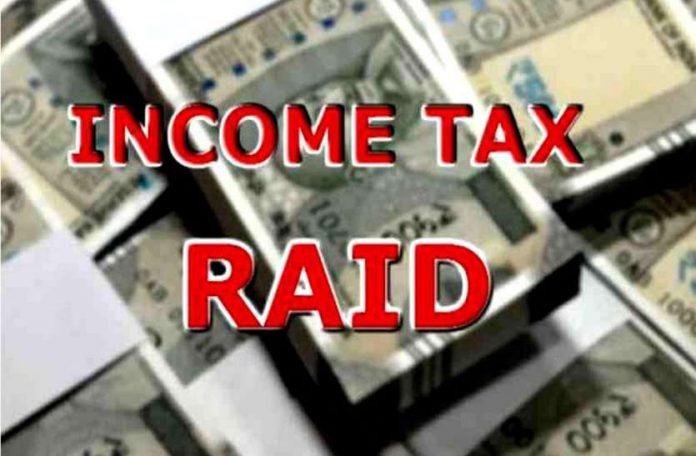This article is written by Gulrukh Kaur Sidhu, pursuing a Certificate Course in Advanced Corporate Taxation from LawSikho.com. Here she discusses “Powers and Procedure for Income Tax Raids (Search and Investigation)”.

Introduction
Movies like Raid and Special 26 are fun to watch because the good guys are set to catch the bad guys. But the scenes so shown are nothing, but the last of the steps of the procedure laid down for the search and Seizure (aka Raid). This article will highlight the procedure to carry out a raid and also, the people (aka the Good Guys) who have the power to do the same.
‘Income Tax Raid’ basically means a search operation conducted by Income Tax officials if they have any or both of the 2 reasons, first, any strong evidence of any Undisclosed Asset in your possession; second anything suspicious about the asset that you own and that, they also have the power to seize any undisclosed asset. Section 132 of The Income Tax Act (IT Act) lays down the procedure and the authorities who can conduct Search and Seizure and, if the raid takes place, then the last 6 years unaccounted money will be calculated and tax @ 30% along with penalty of equal amount of 30% i.e. 60% or more with interest is collected forcefully.
People
Typically, in a raid, the following people are involved:
- Principal Director General
- Director General
- Principal Director
- Director
- Principal Chief Commissioner
- Chief Commissioner
- Principal Commissioner or Commissioner and their subordinates
That is, these people have the power to carry out a raid in accordance with the provisions of the IT Act. Usually, it is the abovementioned 7 people who authorise a raid after summons are received under section 131 or 142 of the IT Act and if the authorities believe that an individual possesses undisclosed income. The best way to understand the situation is via the scenes in the movie Raid. The raid on the house of (Member of Parliament) Rameshwar Singh (Saurabh Shukla), better known as the Don of Sitagarh, is carried on the anonymous tip which is received by Ajay Devgn. This tip helps in fulfilling the 2nd condition i.e. reason to believe that there is undisclosed income.
The raid is usually conducted after it is verified that there is Credible information of tax evasion; for instance, any evasion coming out of reports prepared from the Intelligence Wing of the Income tax department, Information procured from assessment records of taxpayers, Information coming from government departments, Manipulation of books of accounts, vouchers, invoices, Information received with regard to spending being disproportionate to income of the taxpayer i.e. an instance of lavish spending without corresponding income to match the same, Unexplained cash credits, share transactions, Illegal investment in real estate, etc. During this time, the officer authorized to carry out the raid can Enter and search any building, place, etc. where he has a reason to suspect that the books of account, other documents, money, bullion, jewellery or other valuable article or thing representing undisclosed income are kept; and where the keys are unavailable, Break open the locks; Carry out personal search of a person who is suspected to have secreted some item; Seize the items, Placemarks of identification and take extracts or copies of the books of account and other documents; Make a note or inventory of the valuables found during the search. The items/assets that can be seized, if they are not accounted/disclosed in books are:
- Jewellery
- Undeclared cash
- Bullion i.e Gold, Silver
- Books of accounts, challan, diaries, etc.
- Documents relating to a property, deed of conveyances
- Computer chips and other data storage devices
- Fixed deposits etc.
- Locker keys
The items/assets that cannot be seized are:
- Stock-in-trade (except cash) of a business
- Jewellery provided in the wealth tax return
- Assets or cash which is disclosed before the Income Tax and Wealth Tax Department
- Cash which is duly explained
- Assets declared in books of account
- Gold up to 500 gm for each married lady and 250 gm for each unmarried woman and 100gm per male member
Procedure
The procedure for search and seizure aka Raid begins by issuing of notices under section 153A by the Deputy or Joint Commissioner of Income Tax for the last 6 assessment years from the date of search thereby requesting to file under section 153A within 15 to 45 days. The last 6 years are taken and the subsequent 7th year will become time barred u/s 147. The assessment of the same can be taken up separately u/s 147. For instance, a search takes place in the year December 2017. The years for the purpose of Sec 153A will be taken as AY 2012-17 i.e 6 years. The time barred year will be April 2018 as per AY 2011- 12. The notice issued requests for the following documents which can also be submitted along with the suo motto reply under section 153A:
- Financial statements like
- The balance sheet as on Year end, (audited in case of Company),
- Auditor report (in case of Company),
- Profit and Loss Account for the year (audited in case of Company),
- Notes of Account (in case of Company),
- Director report is generally not required
- Cash Flow can be given if applicable and if specifically asked,
- Computation of Income and Tax as per latest return u/s 153A. They may also ask for any changes made in Income in an Income tax return filed u/s 153A and/or its justification or supporting of it.
- Income Tax Return (ITR) and its acknowledgement. Most of the time, it is also seen that both previous ITR and ITR u/s 153A are required. It is basically required by them so that they have printed hard copy though they have a soft copy with them.
During this time, the Assessing Officer (AO) may also ask information after issuing a notice under section 142(1). The notice is generally issued by the Central circle. The AO can also ask for:
1. list of Assets
- List of Bank A/c; Bank Statements, Book and its reconciliation, Summary of opening, total debt, total credit and closing of the year;
- Ageing of debtors with opening, closing and transaction during the year;
- Reconciliation of Stock;
- Detail of Fixed asset, addition with source, Depreciation calculation as per IT and companies act.
2. Details of Liabilities
- Unsecured Loan – Loan Confirmation along with TDS Certificate
- Detail of Share capital along with an addition to Capital
- Detail of any advance received
- Creditors details with opening, closing and transaction during the year (Invoice wise breakup may be required)
- Detail of any other liability
3. Income details
- Detail of Sale with quantity/unit and value
- Rental Income agreement, a chart showing rent, TDS etc
- Detail of Miscellaneous income
- Sale of Shares/Fixed asset if any
- Copies of 26 AS and its reconciliation showing that all Income for which TDS is claimed
4. Expenditure
- Details of major expenses claimed
- Detail of Purchase with quantity/unit and value
5. Any other information that he may deem fit, including
- CIB – Information from AO (Central) & its explanation
The explanation for the content of Hard Disk/ Pendrive (Mazerernama to be operated in presence of Director/ authorised representative i.e permitting Assessing officer to copy data of seized Pen Drive/ Hard disk to another Hard Disk. No one is authorised to use seized pen drive/ hard disk. Assessing officer can only work on copied data)
- Copies of any Assessment Order u/s 143(3)/147 [143(1) may be required]
- Business Activity of the entity and Individuals
While conducting the search, the jurisdiction of it, is not restricted to the companies mentioned in the panchnama only, and the AO can choose to add more companies, if evidence of other related companies’ involvement exists, after taking approval from higher authority i.e. the raid sanctioning authority. Under section 153A, even though a conjoined investigation is done, but the paperwork for the same is done separately for each company, whilst remembering that closing figure should match with the opening of next year. Even in the movie Raid, after the initial search and finding nothing, Ajay Devgn takes permission from the senior official to conduct a more thorough search because he comes in possession of the map of the house which reveals the location of the money in the house.
Residual Provisions
After discharging all liabilities if any assets or proceeds thereof left, then they are returned to the persons from whose custody such assets were seized; where the aggregate amount of money (either seized or realized through sale of seized assets) exceeds the aggregate of the amount required to meet the liabilities, the Government shall pay simple interest at the rate of ½% p.m. The interest becomes payable from the date immediately following the expiry of the period of 120 days from the date on which the last of the authorisations for the search was executed. In the case of wealth tax assessee, items found in excess of gross weight disclosed in the wealth tax return only can be seized. For other persons, exemptions to the tune of, gold jewellery to the extent of 500gms per married lady, 250 gms per unmarried lady and 100 gms per male member of the family are allowed and need not be seized.
Students of Lawsikho courses regularly produce writing assignments and work on practical exercises as a part of their coursework and develop themselves in real-life practical skill.
https://t.me/joinchat/J_0YrBa4IBSHdpuTfQO_sA
Follow us on Instagram and subscribe to our YouTube channel for more amazing legal content.
 Serato DJ Crack 2025Serato DJ PRO Crack
Serato DJ Crack 2025Serato DJ PRO Crack











 Allow notifications
Allow notifications



